Inside Dr. Chris Broyhill’s Game-Changing AirComp Calculator

Royalty logistics, CEO, Rachel Blatt
Female CEO, setting the example in the vehicle shipping industry



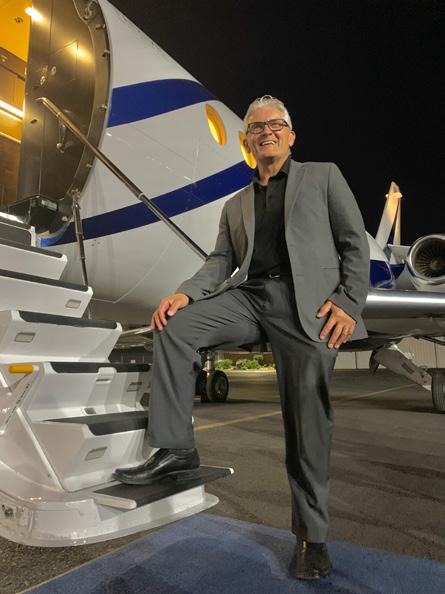

Inside Dr. Chris Broyhill’s Game-Changing AirComp Calculator

Royalty logistics, CEO, Rachel Blatt
Female CEO, setting the example in the vehicle shipping industry




Dear Readers,
Welcome to BizAvJets USA Spring/Summer 2024! Since our founding in 2020, this has been one of our most exciting issues yet. We are excited to feature updates about the business jet market and new trends in the industry. We also have interviews and feature stories that are sure to provoke great thinking and business activity.
Featured on our cover is Dr. Chris Broyhill, an accomplished business aviation professional, who devised the clever AirComp Calculator. This magic tool can help anyone who is trying to make sense of their salary and benefits and determine how much they should be getting paid. This tool is also a great resource for human resource professionals and employers, looking to research salaries and payment amounts.
The business jet industry is ripe with opportunities. While Silicon Valley continues to see tech layoffs, the business aviation industry is growing, aircraft sales are up, and the needs for jet management continue to grow.
We help you find the articles and tools in this issue helpful, and we hope that this edition can remain a resource in your aviation library. Happy summer and safe jet travels!
Sincerely,
Co-Publishers
Annamarie Buonocore and Elijah Stepp
Co-Publishers
BizAvJets USA
Co-Publishers
P.O. Box 5402, San Mateo, CA 94402 (650) 358-9908, Fax (650) 358-9254
Annamarie Buonocore and Eli Stepp (702/465-2027)
Managing Editor Vickie Buonocore
Production Editor Matt DuBois
Advisory Board Member Bert Botta
Business matters, advertising and editorial concerns should be addressed to In Flight USA, P.O. Box 5402, San Mateo, Calif. 94402 or by calling (650) 358-9908–fax (650) 358-9254. Copyright © 2008-2021 In Flight Publishing.
BizAvJets USA is not responsible for any action taken by any person as a result of reading any part of any issue. The pieces are written for information, entertainment and suggestion – not recommendation. The pursuit of flight or any action reflected by this paper is the responsibility of the individual and not of this paper, its staff or contributors. Opinions expressed are those of the individual author, and not necessarily those of BizAvJets USA
All editorial and advertising matter in this edition is copyrighted. Reproduction in any way is strictly prohibited without written permission of the publisher.
BizAvJets USA is not liable or in any way responsible for the condition or airworthiness of any aircraft advertised for sale in any edition. By law the airworthiness of any aircraft sold is the responsibility of the seller and buyer.

Private jet ownership embodies the pinnacle of luxury and convenience in modern travel, granting individuals unparalleled freedom to fly according to their own schedules and preferences. However, beneath the veneer of opulence lies a complex tapestry of operational challenges and regulatory intricacies. In this article, we delve into the indispensable role that aircraft management companies play in facilitating a seamless private jet ownership experience, exploring their multifaceted contributions through real-world examples and in-depth analysis.
Compliance with aviation regulations is paramount in ensuring the safety and legality of private jet operations. Consider a scenario where a private jet owner wishes to fly from New York to London. Before the aircraft can depart, it must adhere to a multitude of regulations governing factors such as airspace restrictions, flight routing, and crew qualifications. An aircraft management company steps in to navigate this regulatory maze, ensuring that the flight plan complies with all relevant regulations set forth by aviation authorities such as the Federal Aviation Administration (FAA) in the United States or the European Aviation Safety Agency (EASA) in Europe. This involves conducting thorough pre-flight checks, verifying crew certifications, and obtaining necessary permits or clearances. By entrusting these responsibilities to experts well-versed in regulatory requirements, private jet owners can rest assured that
their flights proceed smoothly and legally.
Efficient management of day-to-day operations is essential for maximizing the utility and value of a private jet. Let’s consider the example of a corporate executive who frequently travels between multiple cities for business meetings. Coordinating flight schedules, arranging ground transportation, and managing accommodation logistics can be time-consuming and logistically challenging. An aircraft management company acts as a concierge service, streamlining these processes to enhance the executive’s productivity and comfort. From scheduling flights to arranging catering services and ground handling, every aspect of the travel experience is meticulously coordinated. By leveraging their network of partners and suppliers, aircraft management companies ensure that the executive’s travel itinerary unfolds seamlessly, allowing them to focus on their business objectives without being bogged down by logistical details.
Private jet ownership entails significant financial investments, including acquisition costs, maintenance expenses, and operational overheads. To optimize cost management, let’s examine the case of a high-networth individual who owns a fleet of private jets for personal and business use. Each aircraft requires regular maintenance, insurance coverage, and crew salaries, constituting substantial ongoing expenses. By engaging
Continued from Page 4
an aircraft management company, the owner gains access to cost-saving opportunities that might otherwise be elusive. For instance, the management company can negotiate preferential rates with maintenance providers, procure fuel at bulk discounts, and implement fuelefficient flight planning strategies to minimize operating costs. Additionally, the ability to charter out idle aircraft to third parties generates supplemental revenue streams, offsetting ownership expenses and enhancing overall cost-effectiveness.
The competency and professionalism of flight crews are paramount in ensuring safe and enjoyable private jet travel. Let’s consider a scenario where a family embarks on a vacation aboard their private jet. The aircraft’s crew, including pilots and flight attendants, play a crucial role in delivering a personalized and luxurious experience for the passengers. An aircraft management company assumes responsibility for recruiting, training, and managing these personnel, ensuring that they possess the requisite skills and qualifications to meet the owner’s expectations. From maintaining impeccable service standards to prioritizing passenger safety and comfort, the crew’s performance reflects the management company’s commitment to excellence. By entrusting crew management to seasoned professionals, private jet owners can enjoy peace of mind knowing that their travel experiences are in capable hands.
Maintaining the airworthiness and safety of private jets is paramount to safeguarding passengers and preserving asset value. Let’s examine the case of a business owner who relies on their private jet for frequent travel. Regular maintenance inspections and adherence to manufacturer-recommended service


intervals are essential to ensure the aircraft’s reliability and safety. An aircraft management company employs skilled maintenance technicians who perform routine inspections, troubleshoot mechanical issues, and conduct necessary repairs or upgrades. Additionally, the management company implements rigorous safety protocols and quality assurance measures to uphold the highest standards of aircraft maintenance and operational safety. By entrusting maintenance and safety oversight to experienced professionals, private jet owners mitigate risks and enjoy peace of mind during their travels.
For private jet owners seeking to optimize the utilization of their aircraft, chartering represents a lucrative opportunity to generate supplemental income. Let’s consider the example of a corporation that owns a private jet primarily for executive travel but occasionally has idle capacity. By partnering with an aircraft management company, the corporation can leverage the charter market to monetize unused flight hours. The management company markets the aircraft to charter clients, coordinates booking logistics, and manages charter operations on behalf of the owner. Revenue generated from charter flights not only offsets ownership costs but also enhances the aircraft’s overall profitability. Furthermore, chartering provides flexibility and cost-sharing opportunities for owners, enabling them to derive maximum value from their private jet investments.
Private jet travel operates on a 24/7 schedule, necessitating round-the-clock support and assistance for owners. Let’s consider a scenario where a private jet

Last month I circled back to Vacaville, California to visit The Lee A. Archer, Jr. Chapter of Tuskegee Airman, located in the aviation museum at Travis Air Force Base. A visit that, not only filled me with a vast sense of our military’s history but led me to a Young Eagles event the following day at the Nut Tree Airport. I went to the museum to gather more information about the remarkable African-American 332nd Fighter Group known to history as the Tuskegee Airman. During my museum visit I tried to take in all that I could as I listened to Mr. Aubrey Matthews, Historian and Mr. Nathaniel Clayton, Chapter President share with me their vast knowledge of these incredible fighter pilots. The two hours I spent speaking to these gentlemen wasn’t enough time to do the history justice. I suggest anyone interested in aviation and military history swing by the museum and spend the day learning.
As my tour ended, I discovered that the Tuskegee Museum was holding a Young Eagles event at the Nut Tree Airport that weekend.
Mr. Matthews reminded me that many Young Eagles have gone on to have incredible careers in aviation such as Lieutenant Brandon Brown and Captain Jean-Luc Duckworth, USAF. Both were Young Eagles who are now professional pilots.
This took me down memory lane sixteen years
ago to a time when my own son was a Young Eagle. I was excited to return the following day to attend this wonderful event which, as stated in the Chapter Mission, “mentors our youth towards outstanding achievement and leadership in today’s society through social and educational activities.”
Upon arriving at the Nut Tree Airport, I could not help but notice the smiling faces that surrounded me as the volunteers were registering excited kids in anticipation of their first flights. The pilots were lined up on the tarmac alongside their airplanes waiting to take these Young Eagles up to the sky to soar the heavens and experience a birds-eye-view.
The program launched in 1992, Young Eagles has dedicated 30 years to giving youth ages 8–17 their first flights in an airplane. It’s the only program of its kind, with the sole mission to introduce and inspire kids in the world of aviation.
Today, over 2.3 million young people have enjoyed a free introductory flight through the Young Eagles program. These flights are made possible through the generosity of member volunteers.
I spoke with a volunteer, a mother whose son was a “Young Eagle”. He went on to receive his pilot’s license and is now returning the favor of mentorship by taking
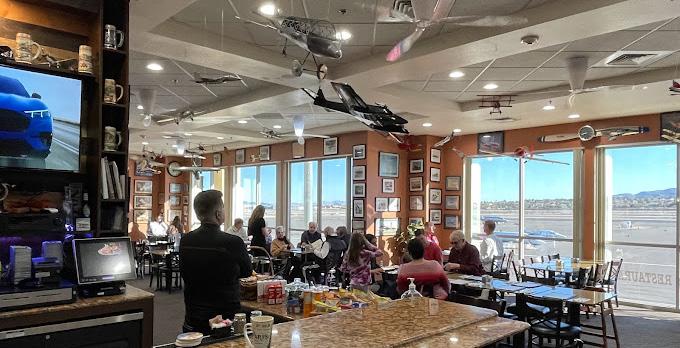
In an exclusive interview with BizAvJets USA Magazine, Eli Stepp sat down with Marie Saady, the esteemed proprietor of The Landings Restaurant, nestled within the bustling Henderson Executive Airport, Nevada. This culinary gem has become a beacon for both aviation enthusiasts and locals, offering a unique dining experience with runway views and gourmet delights.
Marie Saady’s voyage into the aviation culinary world began in Canada, leading her to Michigan and eventually California, where she and her husband managed two airport restaurants. Their journey took a significant turn when they seized the opportunity to establish The Landings Restaurant at Henderson Executive Airport in 2008. Despite initial challenges, the restaurant has flourished, becoming a beloved destination for its organic, scratch-made offerings.
A Scratch Kitchen with a View
The Landings is celebrated for its commitment to quality, boasting an all-organic menu that features Angus meats and fresh, never frozen ingredients. This dedication to excellence has attracted a loyal local following, which Marie estimates constitutes 70 percent of their clientele. The restaurant offers a front-row seat to the comings and goings of various aircraft, adding an element of excitement and novelty to the dining experience.
The airport’s strategic location has made it a hub for celebrities and business moguls alike, with notable visitors such as David Copperfield and Elaine Wynn gracing the vicinity. The Landings has also become a sought-after venue for private events, from birthday celebrations to intimate weddings, providing a unique backdrop for memorable occasions.
Continued from Page 7
Despite the restaurant’s success, the journey has not been without its hurdles. The COVID-19 pandemic posed significant challenges, but the unwavering support of regular patrons like has been instrumental in keeping the doors open. The Landings’ staff, praised for their friendliness and professionalism, plays a vital role in creating a welcoming atmosphere for guests.
Marie envisions a bright future for The Landings, with aspirations to extend operating hours into the evening and potentially reintroduce dinner service. This expansion would not only enhance the dining experience but also contribute to the local community by providing additional employment opportunities.
The Landings Restaurant at Henderson Executive Airport stands as a testament to the perseverance and passion of its founders. With its exceptional cuisine, captivating setting, and warm hospitality, it promises to continue delighting patrons for years to come, offering a taste of luxury in the sky. BizAvJets USA Magazine wishes Marie and her staff great success in the future.



In an enlightening conversation with BizAvJets USA Magazine, Rachel Blatt, the visionary founder of Royalty Logistics, shared the inspiring saga of her ascent in the competitive realm of transport and logistics. Having crossed paths with Rachel at a Cardone event, interviewer Eli Stepp was eager to delve into the narrative that propelled Rachel from corporate confines to entrepreneurial excellence.
The Back Story of Royalty Logistics
Established in 2018, Royalty Logistics swiftly ascended the industry ladder, championing unparalleled customer service. Rachel’s prior experience in transport companies laid the groundwork for her venture, yet it was the stifling corporate atmosphere that ignited her entrepreneurial spark. With no financial cushion and the daunting task of starting from scratch, Rachel’s tenacity shone brightly. Today, Royalty Logistics boasts servicing more than 1,800 clients, including dealerships and rental car companies, specializing in the transport of wheeled wonders.
Rachel’s transition from a corporate employee to a business owner was not born out of ambition but necessity. The sale of her previous company, where she broke glass ceilings as the first female director, cornered her into making a pivotal life decision. The drastic pay cuts and diminishing autonomy left her no choice but to embark on her own. It was a leap of faith, driven by the desire to not just survive but thrive, that led to the birth of Royalty Logistics.
Challenging the Status Quo
Rachel’s journey was not without its hurdles. The transport industry, traditionally male-dominated, presented numerous challenges. Yet, Rachel’s resilience and determination to provide a better service model drove her to success. Her story is a testament to breaking barriers and challenging the status quo, proving that with

hard work and dedication, it’s possible to rise above and create something remarkable.
Looking ahead, Rachel envisions Royalty Logistics expanding its horizons beyond vehicle transport. Diversification into freight and auto locating services for dealership clients signifies the company’s growth trajectory. Yet, at its core, the mission remains to provide exceptional value and service to its customers. She also sees corporate aviation travel in the future of the company.
Rachel’s commitment extends beyond her company. She hosts a podcast where she engages with other automotive industry leaders, sharing insights and experiences. This platform serves as a “master class” in business, offering valuable lessons and inspiration to listeners. Moreover, Rachel’s philanthropic efforts, particularly in supporting women in aviation and trucking, highlight her dedication to making a positive impact in her industry and community.
Rachel Blatt’s journey from the restrictive confines of corporate life to the helm of Royalty Logistics is a narrative of resilience, innovation, and unwavering commitment to excellence. Her story serves as an inspiration to aspiring entrepreneurs, demonstrating that with the right mindset and dedication, it’s possible to overcome obstacles and achieve great success. BizAvJets USA Magazine wishes Rachel and her staff best wishes in the future.

The AirComp Calculator is business aviation’s only online compensation analysis system. It was created by Dr. Chris Broyhill, one of the industry’s most respected authorities on business aviation compensation. An industry veteran with more than 38 years of experience, Dr. Broyhill has led several scientific research projects concerning personnel retention, compensation, and leadership on behalf of the National Business Aviation Association (NBAA) since 2017. Now with his own business, he performs compensation analysis for hundreds of business aviation operators, including national management companies, small management companies, and several hundred clients. BizAvJets USA is pleased to have had the opportunity to speak with Dr. Broyhill about The AirComp Calculator and compensation in the aviation industry.
BizAvJets USA: The first thing I wanted to ask you is what is the AirComp Calculator and why did you decide to start it?
Dr. Chris Broyhill: Back in 2016, I got a Ph.D. in aviation from Embry-Riddle University, and at the same time, I was the Director of Aviation for a large energy company in the Midwest. I was also sitting on the NBAA Business Aviation Management Committee. The summer meeting was in Miami, and I had just finished defending my dissertation at Embry-Riddle’s campus in Daytona Beach. I drove down to Miami, and we were talking about what was going on with pilots going into the airlines and the personnel crisis the industry was experiencing. One of my fellow committee members said, “Well, Doctor, now you’ve got this research doctorate, why don’t you do some research and find out why people are leaving business aviation?” So, I built a scientific survey and in 2017, I conducted it. In the fall of 2017, I presented the results at NBAA BACE in Las Vegas and instantly, overnight I was the expert. People were coming to me saying: “So you’re the expert, tell us what are we doing right and what are we doing wrong, what do we need to do to keep our people,” and that sort of thing. A big element of the retention equation is the compensation piece, and I guess I never realized, even as a director of aviation, the lack of transparency that there is in business aviation compensation.
I had to develop a scientific methodology to parse the compensation data and generate comparisons and recommendations that I could defend. From 2017 to 2020, I served in a variety of positions and did retention and compensation consulting on the side.
Sheryl Barden from API and I worked together on quite a few different occasions, and then in 2020, when Covid hit, my employer at that time furloughed me. I realized that God was sending me a message about my future and it was time to take my practice to the next level. I wanted to make compensation data more accessible to people, so I took the methodology that I had developed and automated it
The online calculator has developed a following, and it has processed thousands of reports. Aviation managers will buy a membership, subscription, or package of reports, and they will use it to run reports for their team. Other users are individuals who want to check the compensation of their current job, or are negotiating for a new job. The way the data is presented, you can’t argue with the methodology. There are aviation people and executives who have taken exception to the data, but the people who don’t argue with it are the HR professionals.
Every single time I have had a compensation conversation with an HR compensation professional, I have explained the methodology, they understand it and they don’t contest it. I still perform deep-dive compensation studies, to date I’ve done over 300 of them for flight departments of every size across the country. In the past, it was nearly always the aviation manager that hired me. These days, I am increasingly hired by the HR compensation professionals to perform these studies. They get tired of delving into the weeds and trying to understand the data at the grandular level. They need to be focused on other things, so they trust me to do it. They are pretty objective; the data is the data. My biggest advantage in these studies is that I am a disinterested third party without a dog in the fight. That helps them trust the data even more.
I spoke in front of the pilot’s round table at the end of the leadership conference recently, and afterward more than one of the attendees came up and told me
Continued from Page 10
how great it has been that I have been able to increase the transparency piece of compensation and make it so democratized and accessible to anyone who wants to find out this information. It has been great to not only perform services for the aviation managers and HR professionals but also for the individual professionals.
BAJ: Right, so this is for anyone that is working in the industry who wants to understand what their compensation should be and for HR departments to better understand what their employees should be paid. Is that correct?
CB: Yes, that is correct, and the interesting thing is that I am in the process of trying to get my Certified Comp Professional credential. I have taken several of the courses and have several more to go. It has caused me to develop a new respect for comp professionals because they really have to be a jack-of-all trades, compensation wise. They have to understand how financial people are paid, and they have to understand how IT people are paid, and many other jobs throughout their companies. They have to understand how executives are paid. There is a
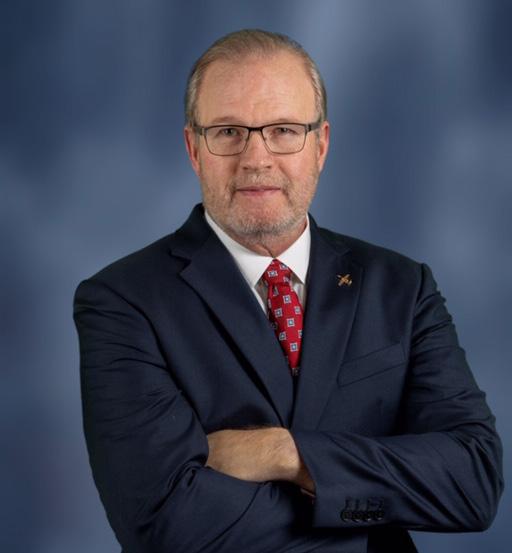
whole raft of areas, and aviation is just so darn arcane. You would know that you not only need to understand what position somebody is in; you would have to know what the difference is between a captain and a senior captain or a maintenance technician and a maintenance supervisor; and why does it make a difference how big the airplane is and how do you regionally correct for where you are and that sort of thing. It has been a journey, but it is something that anybody can use.
BAJ: That is great. How long has it been around? When did you get started with this?
CB: I started the consulting work in 2017. As for the calculator, the first edition of it came online in the summer of 2020. Since then, the calculator has been in existence for about four years, or it will be four years this summer. I upgrade it continually, and I change the way in which it analyzes and what features it has, so now it does some base salary and total cash comp, that is base, plus bonus. It also looks at 401K match levels and total compensation It also looks at bonus target percentages and that sort of thing. It just gives you four different snapshots of what compensation level should be for different jobs.
I’ve got 14 different positions that I can work with, and those are the 14 different positions that I could map across the surveys that I use: captain and senior caption positions, first officer, and chief pilot. Then I have director of aviation flying and not flying, director of maintenance, maintenance supervisor, maintenance technician, line service technician, flight coordinator/ office manager, scheduler, senior flight attendants, and flight attendants. Then I’ve got different jet classes that I have used as well, and I parse out data from the surveys. I can pull out more jet classes than the surveys depict because I’ve got a proprietary way that I can go in and structure the data.
BAJ: What doesn’t it do? For example, if somebody is looking for an aircraft appraisal it does not provide a value, just to be clear, it does not do that?
CB: No, all it is, is business aviation compensation.
BAJ: Does it really do its own thing? Can somebody go in there and plug in all the numbers and get an assessment or do you have to go in there and make it work?
CB: We offer two different levels of service. They can have us run the reports, to make sure they get it right. For an additional cost, we can provide compensation comparisions and I provide observations and recommendations about where input compensation is versus the data. But many users just buy packages, and they have their own access code, their own login credentials, they run their reports, and they log off.
BAJ: Right, and that is what people are looking for
Continued from Page 11
nowadays, a very convenient option like that. So, shifting gears, going back to your background in aviation, you’ve had a lot of jobs in this field. You’ve been in the military. What prompted you to get started in aviation, was your family in aviation, and were you always fascinated by flight?
CB: Yes, I have always wanted to be a pilot. When I was in sixth grade, my dad had a small private plane, and I got to fly in that. I got to see the Air Force Thunderbirds in high school, but I wanted to go to the Air Force Academy since I was like 10 or 12, and I just worked really hard and was fortunate enough to get to go there.
BAJ: That is awesome! What business aircraft do you enjoy flying the most? What is your plane?
CB: The one I have enjoyed flying the most is the Falcon 7x. I’ve got over 1,000 hours in it, and I have actually taught in it. I just like it because I am a former fighter guy. I like the side-stick control, and I like the digital flight control system. It just feels very natural to fly, and it is a very smooth-flying airplane. I like the EASy (advanced flight deck system) cockpit. It is very intuitive. Of the jets I have flown, it is the one I have enjoyed the most.
corporations have a lot of other customers to deal with, so if you are a business aviation professional, or you are an aviation manager in a flight department, and you don’t necessarily trust the numbers that you are getting from HR, or you don’t think HR is keeping up with the trends of what is going on compensation wise in our industry, my data offers you the ability to present data to them and say, “Hey, listen, this is what the expert says about compensation levels and where they should be,” and like I said, the data is the data. I don’t enhance it. I have ways that I regionalize it, but the data is the data. It is a tool for business aviation managers and professionals to get some transparency of what their compensation should look like.
BAJ: Does it get into anything like insurance benefits or 401Ks, or is it strictly about pay?
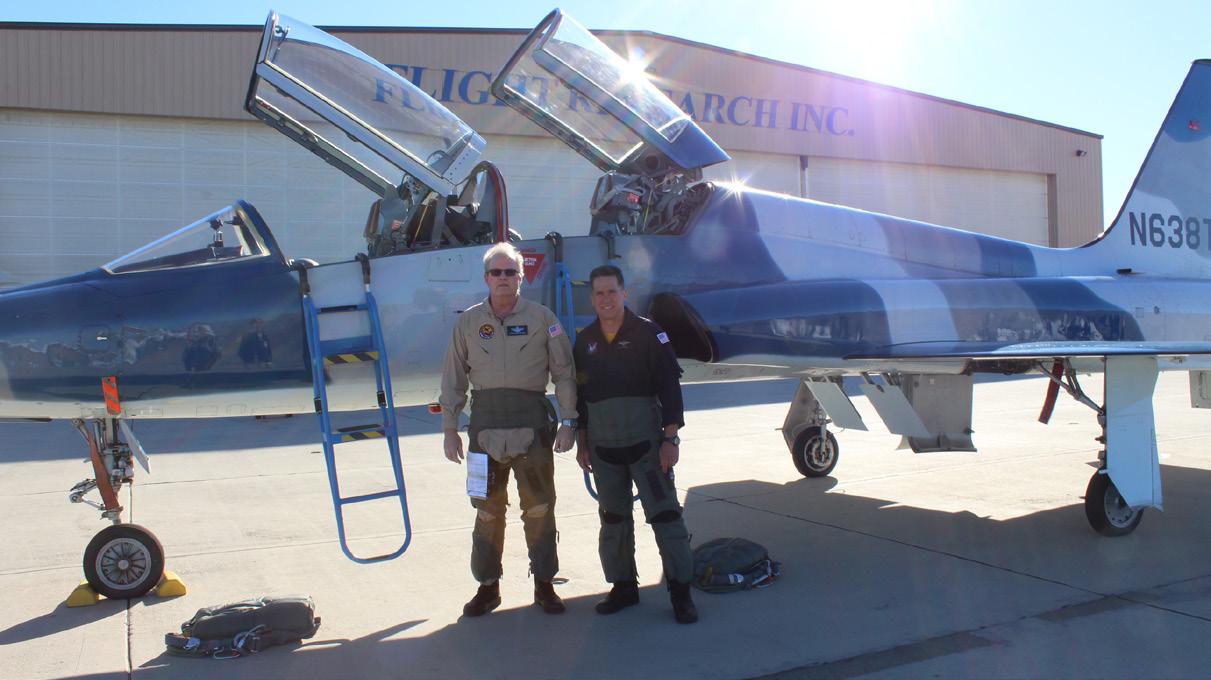
BAJ: That is a cool aircraft. You mentioned that you worked in corporate aviation, like at Clay Lacy and some of the big corporate flight departments. What was that experience like? You mention that there was a lack of transparency. What problems do you think the calculator can solve in those environments?
CB: What happens is there are two different ways to look at this. First of all, you have HR, whether it is a corporation or a management company, you’ve got the HR people that sit off in their own little world. Even if the ones in a management company are little bit more attuned to the aviation compensation, the HR folks in
CB: Yes, it does look at 401K match. I can map out what someone is getting for a 401K match versus what someone else is doing at the different percentage levels. When you get the HR perspectives that are involved in management companies, they have a dog in the fight in terms of what compensation levels are going to be, because they have to maintain happy aircraft owners, so they are going to downplay compensation any way they can to keep the aircraft owner happy. Again, that is where my data comes in. The data is the data. Sometimes my best clients are the people who are the lead pilots who are in charge of management accounts because they don’t trust the numbers that are being given by the management companies. They take my data and go to the aircraft owners. They say, “Hey, this is what this guy says. He is an expert, and this isn’t us talking, this is him.” Again, this is where me being an unbiased third party comes in handy. Right now, I have three national management companies that are using my data, and I’ve got a host of smaller management companies that are using the data, as well. The smaller management companies will actually generate reports and take them to the aircraft owners and say, “This is what you need to be paying because you want to do the right thing.” It has kind of helped all facets of our industry.
Continued from Page 12
BAJ: It sounds like a very helpful tool. What do you think is the biggest crisis facing aviation today: is it the pilot shortage, is it the fuel crisis we have going on?
CB: I just wrote an article about this. I think it is very tempting to think that the airlines are slowing down and that they are not hiring as many people, but some of them are still hiring. American is going to hire 1,300 pilots a year for the foreseeable future. I think it is very tempting for us to say, “Hey, this pilot shortage thing is kind of easing up; we are going to be just fine, but all the conditions we have that fueled the pilot shortage from 2016 and 2017 are still there.
We are still not producing enough pilots; the airlines are still hiring. In 2024, the delivery of new business aviation jets is going to be among the highest ever. They are going to deliver more than 700 new aircraft, and you are going to need pilots to fly them and technician to fix them. I still see ads for management companies offering jobs on a daily basis for people to fly this airplane or that airplane to this location or that location. My point is, as for the pilot shortage or pilotdemand aspect, none of the original conditions have changed. It is still there and is going to be there for a while, so if you try to say, “Ok, we are done having to worry about this,” and it is still going to be with us for a while, it will be a problem. I think complacency is what the biggest crisis is. I think a lot of people want this pilot thing to be over, and it’s not going to be over for a while.
BAJ: That is true. There are a lot of pilot shortages and mechanic shortages. My next questions is, everyday last week we saw a problem with a United Airlines flight being diverted. They are falling apart. This is a labor and mechanic crisis. I am wondering what your thoughts are on this.
CB: The mechanic crisis is certainly with us as well, and it is just as big of a deal as the pilot shortage. It is just that we don’t talk about it as much because it is perhaps not as visible as it should be. I was asked to speak at a Service Elements coffee chat and I was asked, “We are trying to get our principals to pay more for their mechanics and give them a higher hourly rate. How should we inspire them to do that? What can we use?” I said this is easy. Just go down to your nearest luxury car dealership and ask what the mechanics there are making on an hourly basis, because a lot of mechanics in our industry are going to the luxury car industry. For

one, they will make more money per hour, and secondly, they don’t have nearly the liability to worry about when working on an airplane. And do you really want the guy or gal turning wrenches on your jet to be paid less than the person working on your car?
I think that is a big deal. We have created a culture where we make people feel ashamed if they want a career working with their hands. We tell everybody to get a college degree, but there are lots of people out there where college is not what they want or what they need. They just want to go somewhere and work with their hands, and that is a very honorable way to make a living. Some of the coolest people I have known are business aviation professionals who are mechanics. Between the societal pressures of it and the fact that we are probably not paying enough to keep them, and the fact that the airlines are hiring too, it is a multi-faceted problem for technicians and the population as well.
BAJ: This mechanic and technician shortage is clearly leading to problems with airplanes, and it is very concerning. What advice would you give to those seeking employment in business aviation, like people who are thinking about getting into it, whether through the trade side or the more white-collar side?
CB: I would say know what you want. If you are getting into aviation, and your goal is to simply make as much money as you can, you need to go right to the airlines. Just be mindful of the fact that you are going to be a number, not a name, and you are going to be trotting through airports your whole life, just going to and fro. If you want to make money, and that is all aviation is about to you, then the airlines are where you belong. But if you love aviation and you like interacting with people, and you want a flying job that is going to be more rewarding,
Continued from Page 13
then lean more towards business aviation. It has the edge by far. It is a personal job. You interact personally with the people. You get to fly with the same people on a regular basis instead of someone new every time you get into a cockpit. It is a much warmer environment, and don’t get me wrong, we have our fair share of crazy people in our industry, but it is a much warmer environment. What I would say is just do the math and make sure that you know what you want do. Do you want to make the most money you can by flying airplanes or do you want to enjoy the experience and meet a lot of cool people?
BAJ: Yes, that is always the trade off. Do you want to enjoy it or do you want to make more money? Thank you for that advice. Who should buy a subscription to Air Comp Calculator?
CB: It is pretty much for everybody who wants information about their compensation. The tool is for aviation managers and HR departments, but what I am finding increasingly is that there are many individual professionals who want to be able to check up on their compensation. That is why I created the Air Comp Club. It is a pretty low-budget plan. It is about $300 a year, and you get discounted reports and one free report per year, so I think everybody should take advantage of it and plug in, because one day you are going to want to know the yearly basis when your comp review comes up. You will want to know what you are getting paid is fair and what independent data source are you going to have to measure that against. It is for everybody. It is meant for managers, and it is meant for individuals. It will help anybody, depending on what their needs and goals are.
BAJ: On the consulting side, when you work oneon-one with people, do you deal with people who are in a dispute with an employer or feel that they are being underpaid?
CB: Typically, when I do the deep-dive studies, I am hired by the aviation managers or HR departments. If the aviation managers are involved, they want the data to go to their HR with and say, “Here are your numbers; here are these numbers. Let’s talk about the difference in data.” It is usually used as an independent review tool to help with the use of data.
BAJ: Thank you!
Continued from Page 5
owner encounters an unexpected mechanical issue while traveling abroad. In such a situation, timely resolution is imperative to minimize disruptions and ensure the safety of passengers and crew. An aircraft management company offers dedicated customer support and operational assistance, providing immediate response to emergencies and coordinating necessary repairs or alternative travel arrangements. With a team of experienced professionals available at all times, the management company offers peace of mind to owners, knowing that their needs and concerns are addressed promptly and effectively.
In conclusion, aircraft management companies serve as indispensable partners for private jet owners, providing a comprehensive suite of services to navigate the complexities of aircraft ownership and operation. From ensuring regulatory compliance and optimizing operational efficiency to managing costs, crew, maintenance, and charter revenue, these firms play a pivotal role in enhancing the safety, convenience, and value proposition of private jet ownership. By entrusting their aircraft to experienced management professionals, owners can enjoy unparalleled levels of service, flexibility, and peace of mind in their travels.
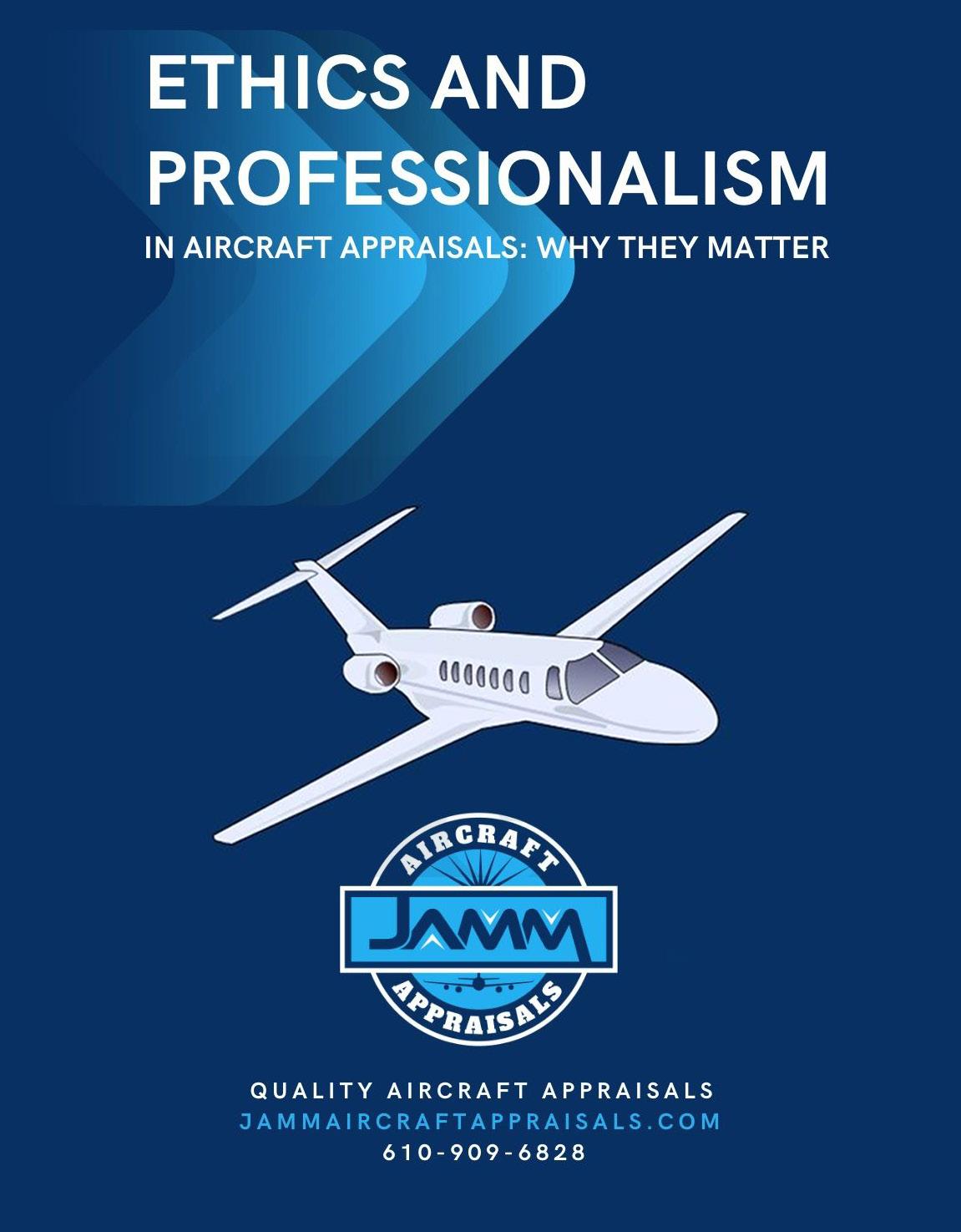

Piper Aircraft, Inc. publically debuted at Sun ‘n Fun in April, a new model in its PA46 line of high-performance aircraft — the Piper M700 FURY — a single-engine, 700 shaft horsepower, cabin-class turboprop. (Photo courtesy Piper)
Piper Aircraft, Inc. announced in February and publically debuted at Sun ‘n Fun in April, a new model in its PA46 line of high-performance aircraft — the Piper M700 FURY — a single-engine, 700 shaft horsepower, cabin-class turboprop.
The Piper M700 FURY represents the first step towards a new generation of the M-Class family, outperforming past PA46 models and several competitive aircraft in performance, operational cost efficiencies, and overall value. Powered by the Pratt & Whitney PT6A-52 engine, the M700 FURY boasts a maximum cruise speed of 301 ktas with a max range of 1,149 nm / 1,849 km (at max cruise speed, 1,424 nm at normal cruise speed) while maintaining its Basic Med compliant 6,000-pound MGTOW limit.
At a 301-knot max cruise speed, the M700 FURY stands alone as the fastest single-engine aircraft in Piper’s enviable 87-year, 134,000 unit production history, and it’s the second fastest model of all time. Only the mighty Piper Cheyenne 400LS turbine twin is faster.
Key performance highlights in different phases of flight include:
• Take-off Performance –¬ TOFL distance over a 50foot obstacle at SL, STD day MGTOW is a class-leading 1,994 ft., representing a 641 ft., 24 percent improvement when compared to the M600 SLS that it replaces. That TOFL performance is also 1,198 ft. (38 percent) shorter than a competing single-engine jet.
• Initial Climb – after a MGTOW departure, the
M700 enjoys a class-leading 2,048 fpm climb rate, 32 percent better than the M600.
• Climb to Altitude – settled into the climb, the M700 FURY reaches a comfortable FL250 in 13.9 minutes (34 percent quicker than the M600) after covering a short 34-mile distance (35 percent less distance than prior) while only burning 97 lbs. of fuel (25 percent less fuel than the M600 and nearly 50 percent less fuel than a single-engine jet competitor).
• Cruise – 301-knot max cruise speed.
• Landing Performance – Landing over a 50 ft. obstacle, the M700 FURY continues its class-leading performance, achieving a 26 percent reduction versus the M600 and within half the ground roll distance of some competitors.
“The M700 FURY is a beautifully efficient, crosscountry thoroughbred that gives our customers a performance-based flight experience with economics never seen before,” said Piper President and CEO John Calcagno. “We listened, and we delivered. The M700 FURY encompasses power, performance and the most advanced safety measures available today and an overall value proposition that is extremely compelling to individuals and corporate flight departments alike.”
Airframe changes to accommodate the more powerful engine include a redesigned, more efficient intake plenum that improves ram air recovery, new engine mount assemblies and an improved exhaust stack design that maximizes residual thrust.
Continued from Page 15
The M700 FURY features Garmin’s G3000 avionics system — a touchscreen-controlled glass flight deck. The G3000 avionics suite is the most sophisticated Garmin technology available and offers the most comprehensive, intuitive and technologically advanced package in today’s market. It all comes standard in the M700 FURY along with the HALO Safety System (including Garmin’s Autoland technology) that was first certified in the M600/SLS.
The new model will retain Garmin’s PlaneSync technology, which includes a 4G LTE Cellular and WiFi datalink that enables new avionics capabilities to streamline an aircraft owner’s pre-flight and post-flight activities. Piper is also first-to-market with Garmin’s remote aircraft status capability enabling owners to remotely check the fuel quantity, aircraft location, oil temperature, battery voltage, the current METAR at the aircraft’s location and more via the Garmin Pilot application. PlaneSync technology also automatically downloads databases wirelessly while the aircraft is powered down and the owner is away from the aircraft.
This new aircraft includes six new interior schemes, featuring new leathers and aesthetically styled seats that have been thoughtfully crafted with the customer in mind.
FAA certification for the aircraft was achieved before the end of Q1, 2024 with deliveries starting immediately thereafter. International validations for Canada, EASA, the UK, and Brazil will be achieved in the second half of 2024, with customer deliveries in those regions before the end of the year.
To learn more about Piper Aircraft, visit the company’s website at www.piper.com.
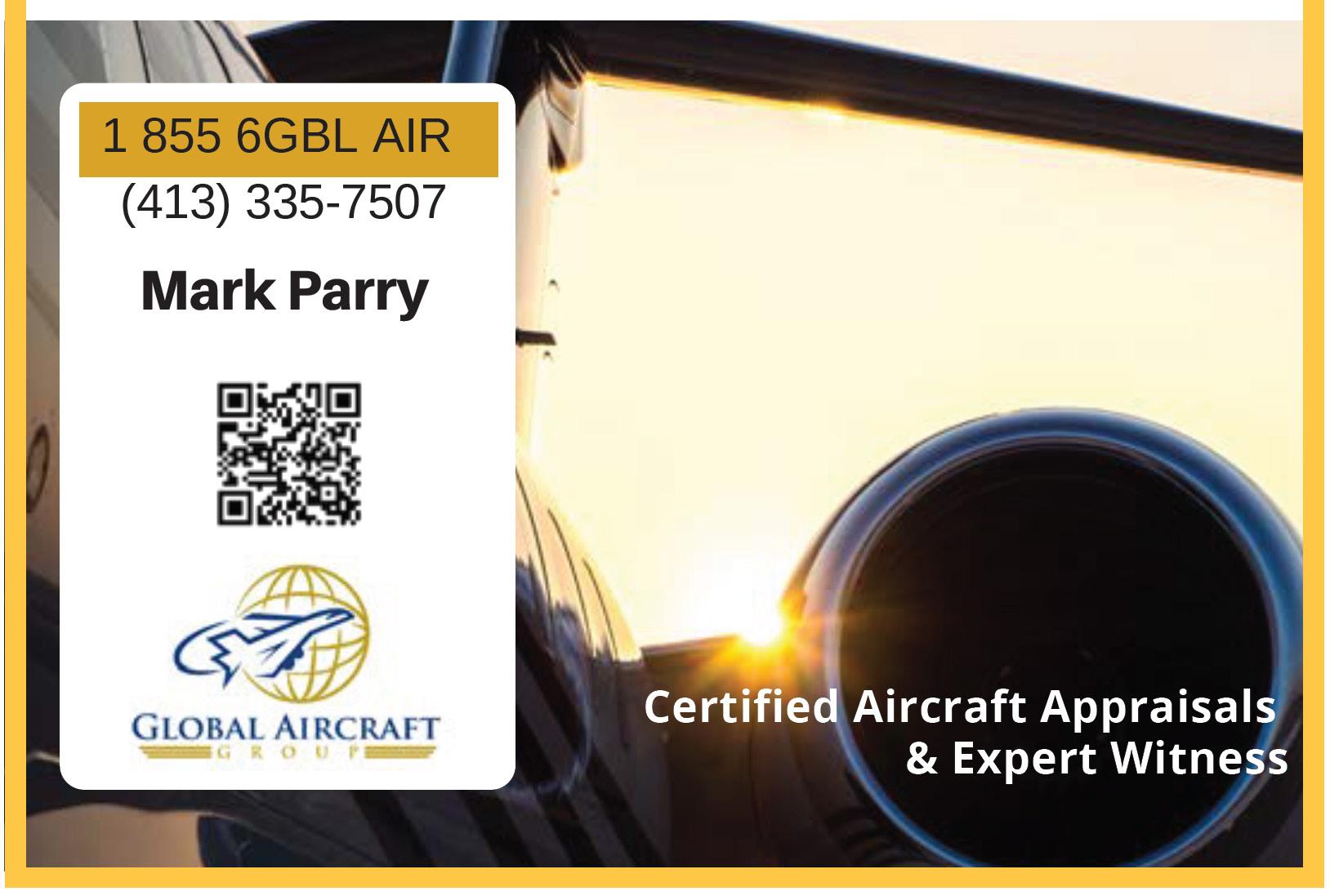
Continued from Page 6
other Young Eagles on their first flights.
Over the course of the morning, I had a chance to chat with some of the kids and was eager to hear what they had to say.
“Cool” was the common theme. One told me that he liked going up high and didn’t realize how much green was below and another said that he really liked going up high and feeling the turns in his stomach. A young girl said that she was a tiny bit scared at first and then got used to it after a few minutes, further stating that the landing was much softer than commercial airplanes.
I’d like to give a big shout to the volunteers who mentor and make education fun while giving children the opportunity and exposure to help turn their dreams into reality, to look to the sky, and fly. One such volunteer is pilot Russell (Russ) Fisher.
Russ was generous enough to take me on a flight and I asked him some questions about his biplane and why mentoring young pilots are important to him.
“The aircraft we flew in was a 1946 Boeing Stearman PT-17. The aircraft was used by the Army Air Corps as the initial pilot trainer for all pilots in WWII. The aircraft has been at Nut Tree for about 30 years. It was restored by Duncan Miller, John Peters and Jim Edwards. I partnered with Jim Edwards about 5 years ago and then purchased the aircraft fully about a year ago”.
“I have always tried to find the time when I am not traveling for work to be at the Young Eagles days. I simply love to fly and want to share that passion. I hope to inspire the kids I fly. That is why I do all of it. Now that I own such a significant piece of history with the Stearman I want to make that history available to the kids. It’s not a video game or picture on the internet. It’s real. You can touch it and feel it. No computer game or YouTube video will give you the rumble of that radial engine or the wind in your face. The excitement on those kids’ faces just warms my soul.”
Russell summed it up with these parting words, “Unlike so many other professions in the world, being a pilot is not something you do, it is something that you are. Aviation is in the blood.” I couldn’t agree more. With Historians like Mr. Matthews keeping our aviation history alive along with dedicated volunteers and mentors ready to pass down the history and teach the knowledge to the next generation.
Fly well, Blue Skies..
~Denise


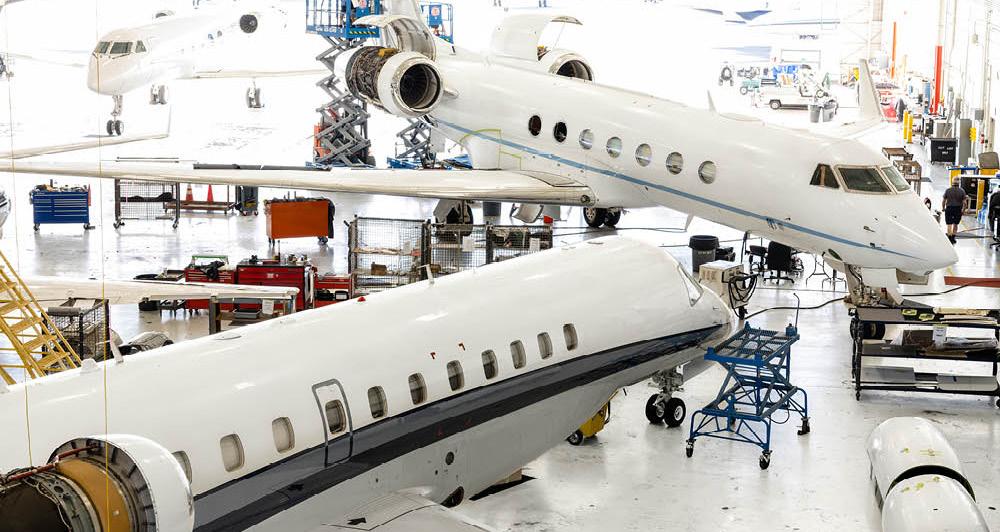
Satellite-Based Internet Solution Now Available for Leading Business Jet Models at Clay Lacy’s East and West Coast MROs
Clay Lacy Aviation has agreed to become an authorized dealer and installer for Starlink, complementing its suite of maintenance, repair, and overhaul (MRO) services at its repair stations in Los Angeles and Oxford, Connecticut. The satellite-based internet solution engineered by SpaceX enables in-flight 4K video calls, streaming, online gaming, and virtual private networks. Starlink is part of the largest satellite constellation, with more than 4,700 satellites in low Earth orbit and constantly launching more.
Starlink is now entering the business aviation market and is expanding its list of certifications and supported aircraft. Supplemental type certificates (STCs) are currently available with Clay Lacy for the Bombardier Global 6000, Express and XRS, and the Gulfstream G650/ER. Additional models are expected throughout the year including the Challenger 300/350, Global 5000/5500/6500/7500, Gulfstream G550/G450/GIV/ GV, Embraer Legacy 600/650, Praetor, and Phenom 300, among many others.
“We’re proud to be able to add to our list of
comprehensive avionics and communications maintenance and installation options,” said Eddy Diaz, Avionics Manager for Clay Lacy Aviation. “Starlink offers business aviation high-speed, global-coverage solutions that can transform the flight experience for passengers, as well as enhance the operations for crew members. We anticipate many aircraft owners will be eager to add this reliable connectivity technology.”
Clay Lacy Aviation operates FAA Part 145 Repair Stations with experienced maintenance technicians and installation teams at its locations in Van Nuys Airport (KVNY) near Los Angeles, and WaterburyOxford Airport (KOXC) in Connecticut, serving New York and the Northeast. Its comprehensive in-house capabilities include airframe and engine maintenance, line maintenance, inspections, avionics and cabin entertainment, and interior upgrades and refurbishing. Its extensive AOG support and on-site parts inventory helps reduce downtime and costs for operators.
The private aviation services provider has extensive experience performing avionics installations and modifications on leading business models including
Continued from Page 18
Gulfstream, Dassault Falcon, Bombardier and Hawker aircraft. It is also an Embraer Authorized Service Center for the Phenom, Legacy and Praetor airframes.
The anticipated downtime for Starlink installation ranges from 15 to 25 days, depending on the aircraft model. Aircraft owners and operators are encouraged to contact Clay Lacy Aviation to reserve their installation spot as additional STCs are made available. A custom quote can be provided by contacting Eddy Diaz, Avionics Operations & Sales Manager, at ediaz@claylacy.com or 818/947-5405.
To learn more, visit the Clay Lacy website at claylacy.com.

Banyan Air Service has announced the promotion of Jon Tonko to the role of Chief Operating Officer (COO). This significant appointment comes as a testament to Jon’s 20-year dedication to partnering with our customers, enhancing Banyan’s operations, being instrumental in the development of Banyan North and the new satellite MRO facility in St. Augustine, as well as his leadership in achieving record-breaking fuel sales.
In his new role as COO, Jon will continue to oversee the operational activities of the Customer Support Department, Banyan Pilot Shop, Parts Solutions, IT, and Marketing Departments. Additionally, Jon will provide support to the VP of MRO, Director of Avionics, and General Administration. His broadened responsibilities reflect his comprehensive understanding of the company and stems from his 30-plus years of experience in the business aviation industry.
Under Jon’s leadership, the Customer Support Department has flourished, earning the title of #1 U.S. FBO as voted by industry professionals. Jon attributes this success to the collective effort of his team, who have consistently delivered outstanding customer experiences. The department’s achievement is evident in the hundreds of transient customers who consider Banyan their “home away from home.”
Jon is set to play a crucial role in leading multiple departments of Banyan. His primary focus will be on managing the core operating functions of the company
and contributing significantly to the strategic direction and corporate growth of Banyan. His expertise, along with his proven track record of leadership and innovation, positions him perfectly to lead the company into a new era of success and expansion.
For more information, visit www.banyanair.com.
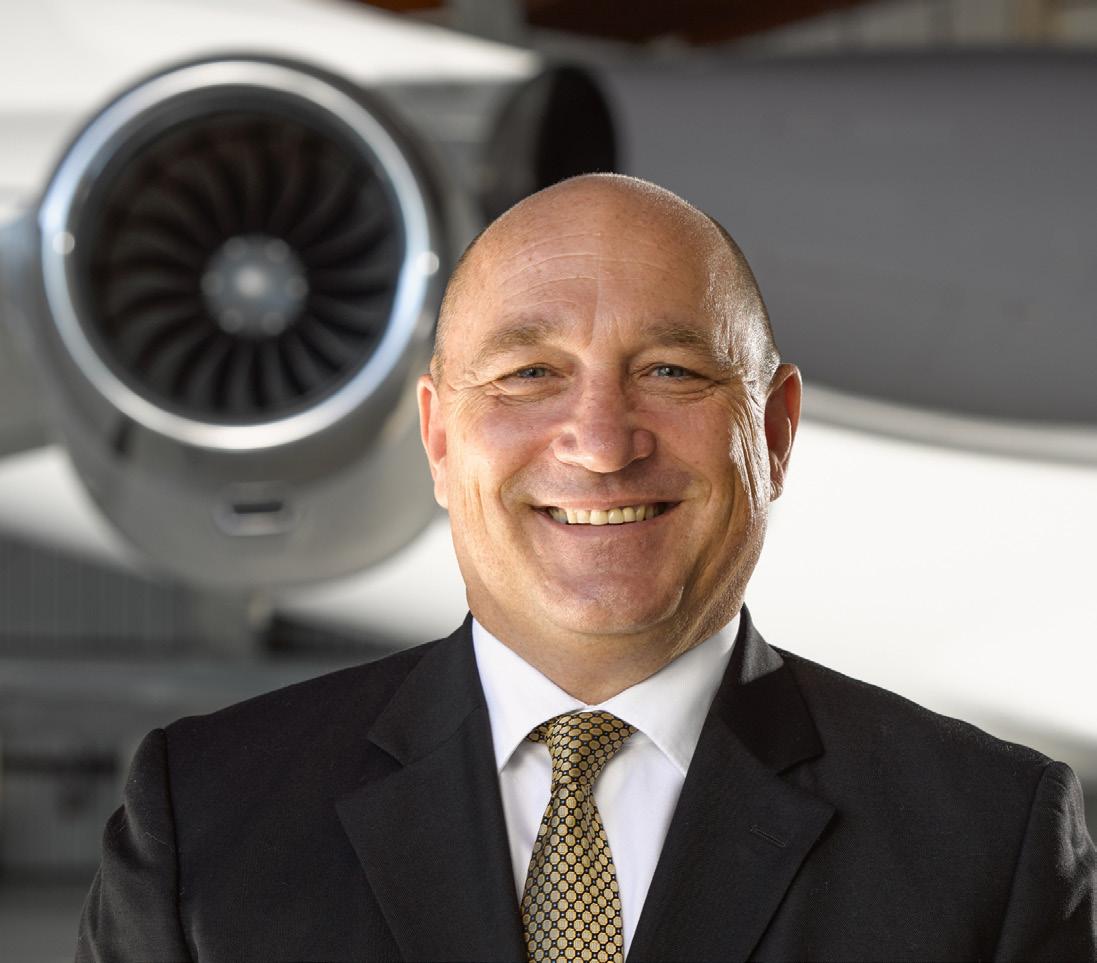










XB-1, on March 22, demonstrated its state-of-the-art technologies to enable efficient supersonic flight including carbon fiber composites, advanced avionics, digitally-optimized aerodynamics, and an advanced supersonic propulsion system. (Photo credit: Boom Supersonic)
Boom Supersonic, the company building the world’s fastest airliner, Overture, on March 22 announced the successful flight of XB-1, the world’s first independently developed supersonic jet, at the Mojave Air & Space Port in Mojave, Calif. Like Overture, XB-1 leverages stateof-the-art technologies to enable efficient supersonic flight including carbon fiber composites, advanced avionics, digitally-optimized aerodynamics, and an advanced supersonic propulsion system.
“Today, XB-1 took flight in the same hallowed airspace where the Bell X-1 first broke the sound barrier in 1947,” said Blake Scholl, founder and CEO of Boom Supersonic. “I’ve been looking forward to this flight since founding Boom in 2014, and it marks the most significant milestone yet on our path to bring supersonic travel to passengers worldwide.”
“Everyone on the XB-1 team should be incredibly proud of this achievement,” said Bill “Doc” Shoemaker, Chief Test Pilot for Boom Supersonic. “It has been a privilege to share this journey with so many dedicated and talented professionals. The experience we have gained in reaching this milestone will be invaluable to Boom’s revival of supersonic travel.”
Two decades after Concorde’s retirement, the first flight of XB-1 marks the return of a civil supersonic aircraft to the skies and paves the way for the revival of mainstream supersonic travel. The XB-1 program provides the foundation for the design and development of Overture, while establishing a safety-first culture in engineering and manufacturing. XB-1 validates key technologies and innovations, including:
• Augmented reality vision system: Two nose-mounted cameras, digitally augmented with attitude and flight path indications, feed a high resolution pilot display enabling excellent runway visibility. This
XB-1 was flown by Boom Chief Test Pilot Bill “Doc” Shoemaker, and Test Pilot Tristan “Geppetto” Brandenburg flew the T-38 chase aircraft which monitored the flight. XB-1 took off from the Mojave Air & Space Port and flew in the same airspace that hosted many historic first flights, including the flights of the Bell X-1, the North American X-15, and the Lockheed SR-71 Blackbird. XB-1 met all of its test objectives, including safely and successfully achieving an altitude of 7,120 feet and speeds up to 238 knots (273 mph).
Continued from Page 21
system enables improved aerodynamic efficiency without the weight and complexity of a movable nose.
• Digitally-optimized aerodynamics: Engineers used computational fluid dynamics simulations to explore thousands of designs for XB-1. The result is an optimized design that combines safe and stable operation at takeoff and landing with efficiency at supersonic speeds.
• Carbon fiber composites: XB-1 is almost entirely made from carbon fiber composite materials, enabling it to realize a sophisticated aerodynamic design in a strong, lightweight structure.
• Supersonic intakes: XB-1’s engine intakes slow supersonic air to subsonic speeds, efficiently con-
verting kinetic energy into pressure energy, allowing conventional jet engines to power XB-1 from takeoff through supersonic flight.
The inaugural flight of the XB-1 demonstrator takes place as Overture continues to advance toward production, with a growing global network of Tier 1 suppliers and an order book including 130 orders and pre-orders from American Airlines, United Airlines, and Japan Airlines. Overture will carry 64-80 passengers at Mach 1.7, about twice the speed of today’s subsonic airliners. Optimized for speed, safety, and sustainability, Overture is designed to run on up to 100 percent sustainable aviation fuel (SAF).
For more information about XB-1, visit: https:// boomsupersonic.com/xb-1 .For more information about Overture, visit: https://boomsupersonic.com/overture.
Boom Supersonic’s mission is to make the world dramatically more accessible through flights that are faster, more affordable, more convenient, and more sustainable. For more information, visit https:// boomsupersonic.com.
Premier Private Jets, a national charter provider, has acquired new maintenance, repair, and overhaul (MRO) capacity and a fixed-base operation (FBO) in Dayton, Ohio from Stevens Aerospace and Defense Systems. These facilities were slated to be closed by Stevens as it consolidated its own operations.
“Premier Private Jets is growing its popular charter service. This acquisition gives us needed MRO capacity and expands our geographic footprint,” said CEO Josh Birmingham. “We’re also pleased to preserve the jobs of 40 experienced and talented employees in Dayton and welcome them to the Premier family.”
Premier will operate the MRO under the name Premier Aviation Services and the FBO as Premier Jet Services. The company will upgrade and expand the terminal. “By acquiring Stevens, we add 370,000 square feet of leasehold space that includes a full refurbishment design center for paint and interiors plus aircraft hangar storage,” Birmingham said.
Current customers can expect a seamless transition and continue to work with a team they know well. The purchase strengthens Premier’s FAA Part 145 repair capabilities by adding a third MRO location to bases in Michigan and Florida. The addition of Dayton provides more capacity to service Premier’s own fleet as well as other aircraft.
Premier conducts purchase evaluations, avionics installations, repairs and overhauls, and interior/exterior refurbishment. Premier’s respected team will continue to guide customers in selecting ideal avionics systems, including high-speed data and cabin management and next-generation modernizations, as well as offering flight line maintenance for most aircraft.
For assistance in Dayton, contact General Manager Paul Wells at (937) 454-3400 or email: Paul.w@ premieraviationservices.aero. For general information visit the Premier Aviation Services website at premieraviationservices.aero.
Despite continuing philosophical differences between the FAA and EASA about what meets International Civil Aviation Organization (ICAO) standards for minimum equipment lists (MEL), both agencies offered new details that clarified operator expectations surrounding this issue during a recent panel discussion at the NBAA International Operators Conference (IOC) in Orlando, FL.
MELs are defined as the list of equipment that may be inoperative, yet still allow an aircraft to operate safely per FAA regulations. MELs list requirements for operators who wish to fly with specific inoperable equipment. The FAA views the D095 Letter of Authorization (LOA) as compliant with ICAO rules, however the agency has also created a pathway to compliance that is less burdensome to operators.
The FAA said it has approved more than 11,000 U.S. operators through its D095 and D195 LOAs. For the 7,000 operators that only need to meet FAA requirements, the D095 remains and easy pathway to MEL authorization. However, U.S. operators that fly to Europe now have a less burdensome pathway to demonstrate compliance with EASA’s expectations compared to the period before the FAA released an amended advisory circular AC 9167A last October.
At IOC, FAA Manager of Authorized and Certificated Operations Matt Porter and EASA Representative to the U.S. Ludovic Aron, talked about the issue. Aron acknowledged disagreements remain about what is and is not ICAO compliant, underscoring the need for further harmonization between the two organizations.
According to EASA, the use of a master minimum equipment list (MMEL) as authorized by the FAA by means of LOA D095, as per AC 91-67A, does not sufficiently customize the MMEL for the aircraft in question. The MEL must be tailored to the systems and configuration of the individual aircraft, EASA said. AC 91-67A also does not consider a number of individual variables such as the kind of operations conducted, special approvals, operating environment, route structure nand more, which may require additional equipment considered at the MEL level, according to EASA. As a result, the agency said use of D095 is not deemed by EASA as ICAO compliant.
Audience members asked why the two standards are different.
“Over the years, we’ve seen a change in the level of standards at ICAO, versus the level of requirements at the FAA,” said NBAA Director, Flight Operations and Regulations Brian Koester, CAM. “Historically, when some of these standards come into place, FAA standards
or requirements exceeded ICAO standards. Now, that’s not always the case. ICAO does not have to conduct a cost/benefit analysis. They can pass standards no matter how much they’re going to cost operators. At the FAA, they have to conduct a cost/benefit analysis. So, at times, it’s beneficial to have those differences in place.”
With AC 91-67A – which amended previous advisory circular AC 91-67 — the FAA has updated its D095 application process for Part 91 operators. According to the FAA, if the operator submits a signed statement that their procedures document conforms to the content described in Advisory Circular 91-67A, then the FAA is not required to review the operator’s procedures document. An exception exists if the operator has had a previous LOA D095 canceled, rescinded or revoked.
Similarly, if an operator submits a signed statement that their operator-developed D195 MEL conforms to the content described in AC 91-67A, then – since the AC lays out acceptable means of compliance – the FAA can conduct an expedited review of the MEL content because those documents adhere to the advisory circular, according to the agency.
Not only is this procedure less burdensome and disruptive for the industry, but FAA said the updated application process allows more than 7,000 Part 91 operators that never fly outside the U.S. to continue to use D095. For operators applying for a D195 LOA, the FAA has updated guidance to its field offices that will permit issuance after a brief review, provided the application is accompanied by an “attestation letter.”
The agency said both D095 and D195 applications meet ICAO requirements as well as meet the needs of both domestic and international operators and the updated procedure also complies with U.S. international obligations.
The updates are the latest developments in a chain of events going back to 2017, when unregistered U.S. operators traveling to Europe using D095 LOA authorizations began experiencing findings during Safety Assessment of Foreign Aircraft (SAFA) program ramp inspections. European regulators said they did not view D095 as compliant with ICAO requirements, which, traditionally, EASA regulations closely align with.
Later that year, FAA pulled their guidance to operators, expecting to review it, revise it and ensure that U.S. operators have a pathway to meet ICAO standards, leading to the amended AC.
To learn more, visit the NBAA website at nbaa.org.
